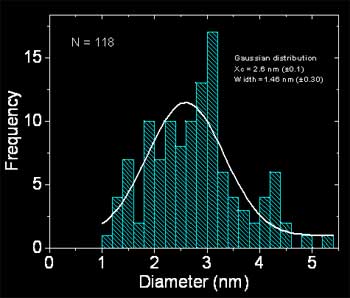 As a high school student at Lake Highland Preparatory School, I have had the privilege of working at the University of Central Florida with Enrique del Barco and several of his graduate students on their projects. The project I am currently involved deals with nanotechnology. When objects are that small, they have different properties then larger objects do, meaning that there is still much to discover about them. I work with protein molecules, which are placed on gold, and observing how, they cover the surface under an Atomic Force Microscope that I am learning how to use. This opportunity has exposed me to many different aspects of Physics, while integrating myself into the project I am involved in. I am learning aspects of advanced physics by applying key principles to the project. Participating in this has opened me up to the world of Science and I will able to use the knowledge and experience I am gaining here further in high school and into college.
As a high school student at Lake Highland Preparatory School, I have had the privilege of working at the University of Central Florida with Enrique del Barco and several of his graduate students on their projects. The project I am currently involved deals with nanotechnology. When objects are that small, they have different properties then larger objects do, meaning that there is still much to discover about them. I work with protein molecules, which are placed on gold, and observing how, they cover the surface under an Atomic Force Microscope that I am learning how to use. This opportunity has exposed me to many different aspects of Physics, while integrating myself into the project I am involved in. I am learning aspects of advanced physics by applying key principles to the project. Participating in this has opened me up to the world of Science and I will able to use the knowledge and experience I am gaining here further in high school and into college.
 I work with a graduate student on his project, which involves electric current through gold nano-particles. We first needed to place a homogeneous layer of particles on a flat gold surface. To do this, we tested different delusions of the solution containing the particles by placing the gold chip into it for different amounts of time. After we take out the chip, it needs to be quickly dried off with Nitrogen. To oberve the particles, the Atomic Force Microscope (AFM) is used. The nano-particles are too small to be seen in an optical microscope so the AFM uses a tip to create a sort of topographical map of the surface and we are then able to see how homogeneous that delusion made the surface. When the cryostat is fixed, we will cool down the particles to a temperature close to absolute zero and test the current through the particles. In the image above I show an AFM image taken on a sample of gold nanoparticles deposited on a flat surface. The figure below shows the diagram of the particle size distribution I measured out of many AFM images taken on these samples.
I work with a graduate student on his project, which involves electric current through gold nano-particles. We first needed to place a homogeneous layer of particles on a flat gold surface. To do this, we tested different delusions of the solution containing the particles by placing the gold chip into it for different amounts of time. After we take out the chip, it needs to be quickly dried off with Nitrogen. To oberve the particles, the Atomic Force Microscope (AFM) is used. The nano-particles are too small to be seen in an optical microscope so the AFM uses a tip to create a sort of topographical map of the surface and we are then able to see how homogeneous that delusion made the surface. When the cryostat is fixed, we will cool down the particles to a temperature close to absolute zero and test the current through the particles. In the image above I show an AFM image taken on a sample of gold nanoparticles deposited on a flat surface. The figure below shows the diagram of the particle size distribution I measured out of many AFM images taken on these samples.
